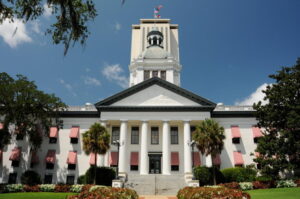By FRANK BERNARDINO,
Co-founder,
Anfield Consulting

As one edges closer to the end of one’s career, in periods of reflection one thinks about those things they got right, and if you are as OCD as I am, those things one was not able to accomplish.
For me, the biggest of those regrets is failing to convince the legislative and executive branches of our state’s government to make a commitment to address the state’s water infrastructure funding needs in a comprehensive and purposeful manner.
While I am concerned with where we are, I have had moments of encouragement, like in 2016 when I was part of a group of stakeholders able to see the enactment of section 403.928, Florida Statutes. It’s a law which requires the Florida Office of Economic Demographics and Research (EDR) to publish an annual report documenting, among other things, the gap in funding needed to implement the state’s many water resources initiatives and needs in our fast-growing state. Surely, in the face of irrefutable information from the most trusted source of financial information in the state, someone would be motivated to act. Now going on its sixth edition, the report continues to expose our state’s vulnerability and its inability to comprehensively tackle this issue.
In 2018, EDR projected the 10-year funding gap would grow to $116.57 million by 2027. In 2021, that forecasted annual gap would grow to an eye-watering $840 million by 2029.
In short, each subsequent edition reveals how Florida is falling farther and farther behind.
Despite record investments by the current administration in water infrastructure, at the current spending levels, the state is setting itself up to generate less than half of the funds that will be required to safeguard Florida’s environment and economy.
In 2005, the state budget was slightly more than $65 billion dollars, and the state’s investment in water infrastructure, excluding federal dollars flowing through the state budget, was sightly less than $700 million, or 1.2% of the budget. This past year (Fiscal Year 2022-23), the state budget was $109 billion dollars.
Again, excluding federal funds, Florida invested $2.2 billion in water resources projects and programs, or 2.9% of the budget.When we compare these funding levels to other important infrastructure priorities, namely transportation, we find that Florida invests about 12% of its budget for roads, bridges, and ports. This forces the question, is the disparity in environmental infrastructure spending a true reflection of our values?
Said another way, is transportation infrastructure 5 to 10 times more important than a clean and abundant water supply? Or flood control? Or the health of our lakes, rivers, and streams? Any examination of this question among the public or policy makers would likely yield the same response: “No.”
So then, given the importance of water to our economy and quality of life, at a minimum, our level of effort should equal that of mobility.
The current shift in responsibility to the state to almost single-handedly fill the forecasted gap is neither appropriate nor realistic.
Unfortunately, I believe this is what the state has unintentionally promoted by throttling the water management districts’ ability to produce the revenue necessary to afford and catalyze the regional programs and projects vital to our state’s future.
Since the law requiring the advertising of tax increases associated with the retention of higher revenues tied to increasing property values was enacted, the combined ad valorem collections of the water management decreased from a high of $940 million in Fiscal Year 2007-08 to the current levels which hover around $520 million. That is a 45% reduction in regionally based revenue to solve regional challenges.
Could the state continue to effectively address the needs of Floridians if its budget was cut by $49 billion?
That is the challenge the state has issued
to the water management districts; but for the generous, yet insufficient $1 billion in support it provides annually.
The state should be lauded for increasingly investing in priority-based grant programs to support Florida’s water infrastructure needs.
Unfortunately, these limited investments have allowed local entities, too, to defer generating their own revenues in favor of standing in line at the state piggy bank, thus avoiding their own measure of responsibility.
What will happen next? I do not know.
I can only hope that future leaders will look upon Florida’s water infrastructure funding landscape and see both the forest and the trees, and perhaps do better than my generation did on our watch.●





















